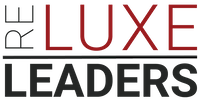Growth without governance looks like momentum—until it doesn’t. Missed forecasts, unprofitable lead spend, and ad hoc hiring are not market problems; they are operating system problems. Elite firms run on controls that force clarity, accountability, and repeatability—especially when conditions shift.
If you intend to build a firm, not a hustle, you need a real estate operating system that enforces non-negotiables. Below are seven controls we implement with leaders inside RE Luxe Leaders® and our RELL™ framework to restore precision at scale.
1) Strategy Cadence and Resource Alignment
Insight: Strategy collapses without cadence. A quarterly objective cycle, tied to a weekly business review (WBR), is the backbone of execution. This is where priorities, resources, and accountability converge—every week, same agenda, same visibility.
Proof: As Why Strategy Execution Unravels—and What to Do About It highlights, misalignment and competing priorities—not poor strategy—derail performance. Cadence turns strategy from intent into operating reality.
Action: Lock a 90-day planning cycle with three to five measurable objectives and explicit owners. Run a 60-minute WBR: 1) KPI review, 2) exceptions and root causes, 3) decisions and owners. No status theater. Decisions documented, dependencies tracked, and resource shifts explicit.
2) Pipeline Quality and Forecast Integrity
Insight: Volume is vanity; stage integrity is value. Your operating system must enforce uniform stage definitions, exit criteria, and probability weights across agents and teams. Without it, forecasts are opinions and cash planning is guesswork.
Proof: Consistent definitions and probability-weighted stages materially improve forecast reliability, which underpins hiring, marketing allocation, and cash timing. This is execution infrastructure, not sales culture.
Action: Define stage exit criteria that require objective proof (contract status, documents, funding milestones). Enforce a weekly roll-up forecast at the team and office levels with a 90-day horizon. Track forecast accuracy by leader and coach to exceptions, not averages.
3) Talent Bench, Capacity, and Performance Standards
Insight: Capacity—not ambition—sets the growth ceiling. A real estate operating system quantifies productive capacity (per FTE, per pod) and links headcount decisions to forward pipeline and cycle times. It also enforces minimum performance standards to protect culture and margins.
Proof: Firms that institutionalize capacity models avoid the feast/famine hiring cycle and protect gross margin per FTE. They also shorten ramp time through standardized onboarding and coaching loops.
Action: Model capacity by role: average deals per agent, support ratios, and cycle times. Tie hiring to 90-day weighted pipeline plus seasonality. Enforce minimum standards (e.g., stage-advanced opportunities per week, service-level adherence) and exit quickly when standards are not met.
4) Unit Economics and Pricing Discipline
Insight: Scale amplifies small leaks. If your contribution margins by channel, team, and client segment aren’t transparent and enforced, growth will compound waste. Price discipline is a force multiplier.
Proof: McKinsey’s The power of pricing shows that small pricing improvements can drive outsized profit gains—often more than volume or cost reductions. In brokerage and team models, disciplined fee structures, minimums, and discount governance protect EBIT through cycles.
Action: Make contribution margin a standard report by lead source, team, and client type. Establish discount approval thresholds and deal desk rules. Review take-rate adherence weekly. Reallocate spend from low-contribution sources to high-LTV segments—no exceptions due to sunk cost bias.
5) Risk, Compliance, and Data Governance
Insight: Data is now a regulated liability. Your operating system must govern permissions, retention, PII handling, and vendor access. Compliance cannot live in a binder; it must live in your workflows and tech stack.
Proof: The Global Digital Trust Insights 2024 report underscores rising enterprise risk from fragmented systems and third-party access. IBM’s Cost of a Data Breach Report 2023 quantifies multi-million-dollar average breach costs—an existential hit for mid-market firms.
Action: Map data flows across CRM, marketing, transaction, and accounting tools. Implement least-privilege access, MFA everywhere, and vendor offboarding within 24 hours. Automate audit logs for PHI/PII fields. Run quarterly tabletop exercises for incident response with legal, finance, and ops present.
6) Marketing-to-Client Acquisition Efficiency
Insight: Lead gen is a cost center until your operating system proves CAC:LTV by source and cycle time. Chasing volume without conversion and velocity visibility perpetuates spend that never clears margin hurdles.
Proof: High performers tie budget to demonstrated payback periods and lock SLAs between marketing and sales for speed-to-lead and follow-up. The result: fewer channels, higher conversion, shorter cash cycles.
Action: Enforce definitions for MQL, SAL, SQL with time-bound SLAs (e.g., sub-60-second first response, 8 touches in 72 hours). Instrument UTM discipline and closed-loop attribution to actual revenue, not appointments. Kill channels that miss target CAC payback windows and redeploy to proven sources.
7) Tech Stack Rationalization and Integration
Insight: Fragmented tools create hidden labor costs, data risk, and decision latency. A real estate operating system standardizes core platforms and enforces integration contracts—what data moves, how often, and who owns accuracy.
Proof: Consolidated platforms reduce swivel-chair time, improve data fidelity, and lower vendor sprawl risk. Integration discipline also enables stronger analytics for forecast and margin control.
Action: Name a stack owner. Define your spine (identity, CRM, transaction, accounting, BI). Eliminate overlapping tools quarterly. Require SSO, event-based integrations, and documented schemas. If a tool can’t integrate or export, it doesn’t make the cut.
Implementation Blueprint: Make It Operational
Move from concepts to controls in 90 days. The sequence matters.
– Governance: Establish the WBR, decision logs, and exception management. Without governance, tools won’t save you.
– Standards: Codify stage definitions, pricing thresholds, SLAs, and data permissions. Publish and enforce.
– Instrumentation: Configure dashboards for pipeline, unit economics, CAC:LTV, and capacity. Visibility precedes accountability.
– Enablement: Train leaders on the cadence, coach to exceptions, and remove blockers weekly. Leadership attention signals what matters.
– Rationalization: Cut stack bloat and vendor creep. Fewer, better-integrated systems outperform sprawling toolkits.
What Changes When Controls Take Hold
Decision cycles shorten. Forecasts become credible. Hiring aligns with future demand, not sentiment. Marketing spend concentrates where contribution margin is highest. Compliance becomes automatic, not performative. In short, you stop managing anecdotes and start managing a system.
This is the work we do inside RE Luxe Leaders® using the RELL™ operating model: build the operating cadence, enforce the standards, and align the economics so firms compound intelligently. For more operator-level frameworks, explore RE Luxe Leaders® Insights.
The Non-Negotiable
Markets will do what markets do. Systems are your protection. A real estate operating system is not software; it’s how your firm decides, allocates, and executes—every week, with discipline. Install the seven controls, and you’ll trade variance for precision and noise for signal.
Serious leaders don’t wait for chaos to force structure. They build the structure first and let the market reward it.





